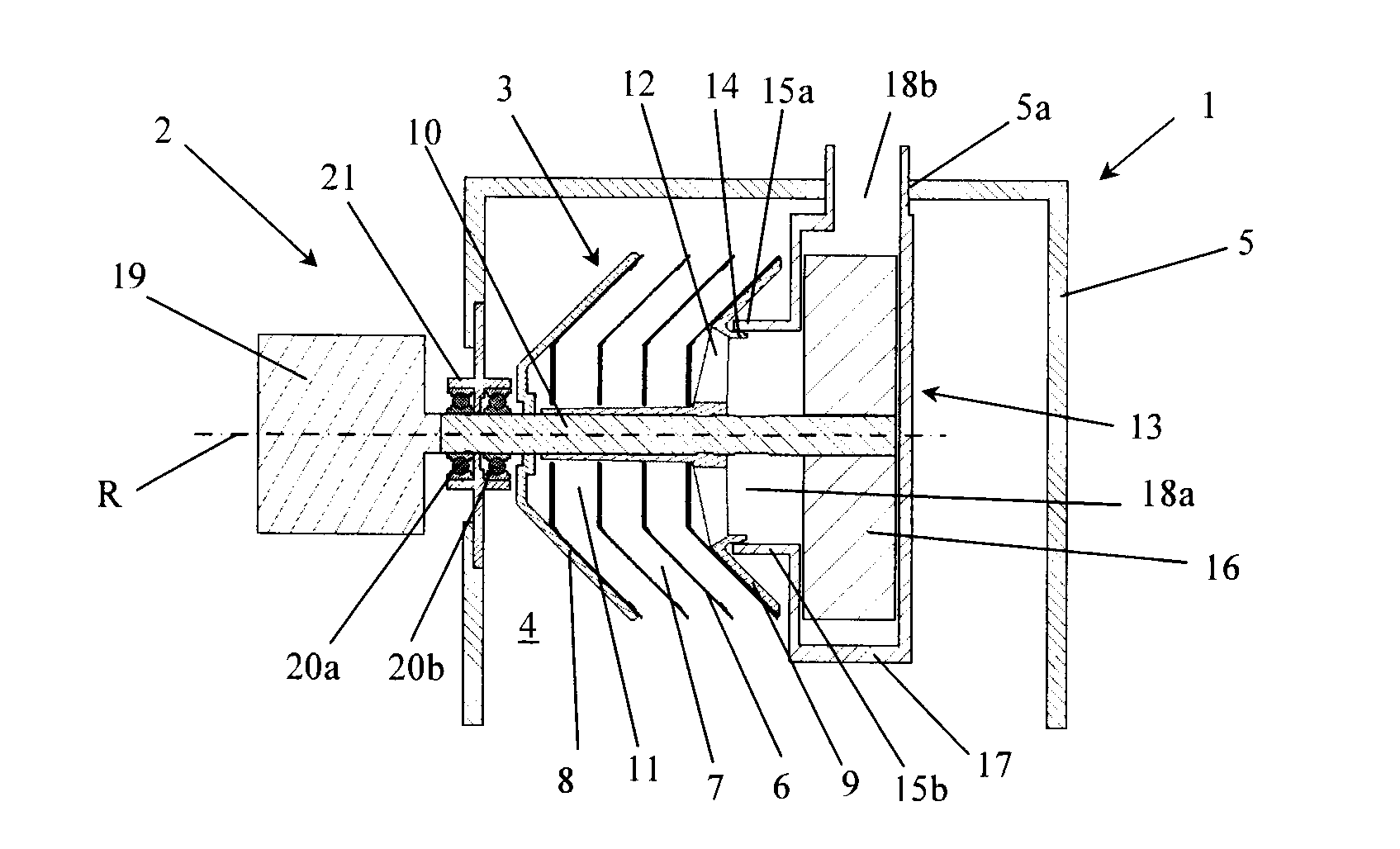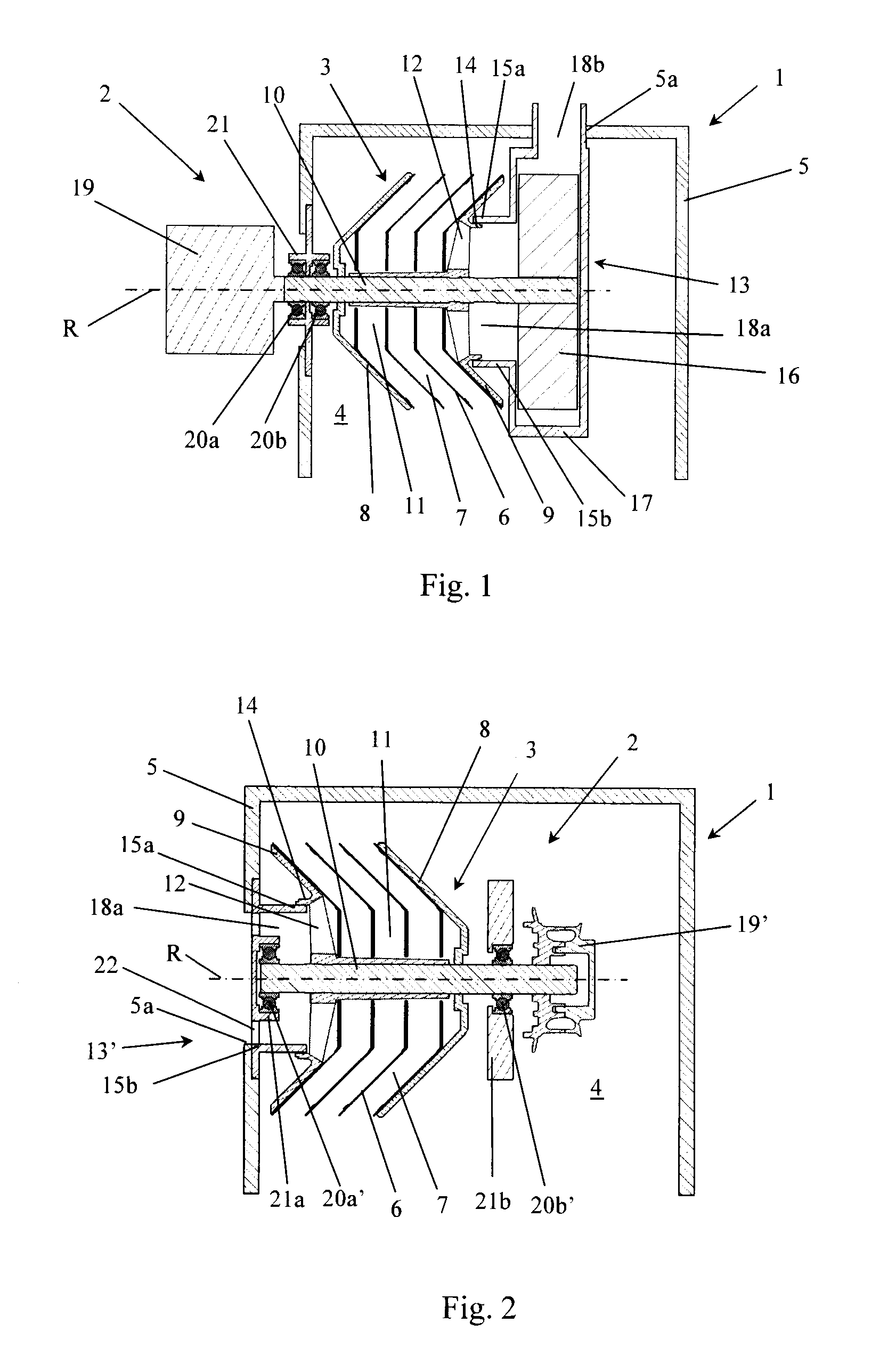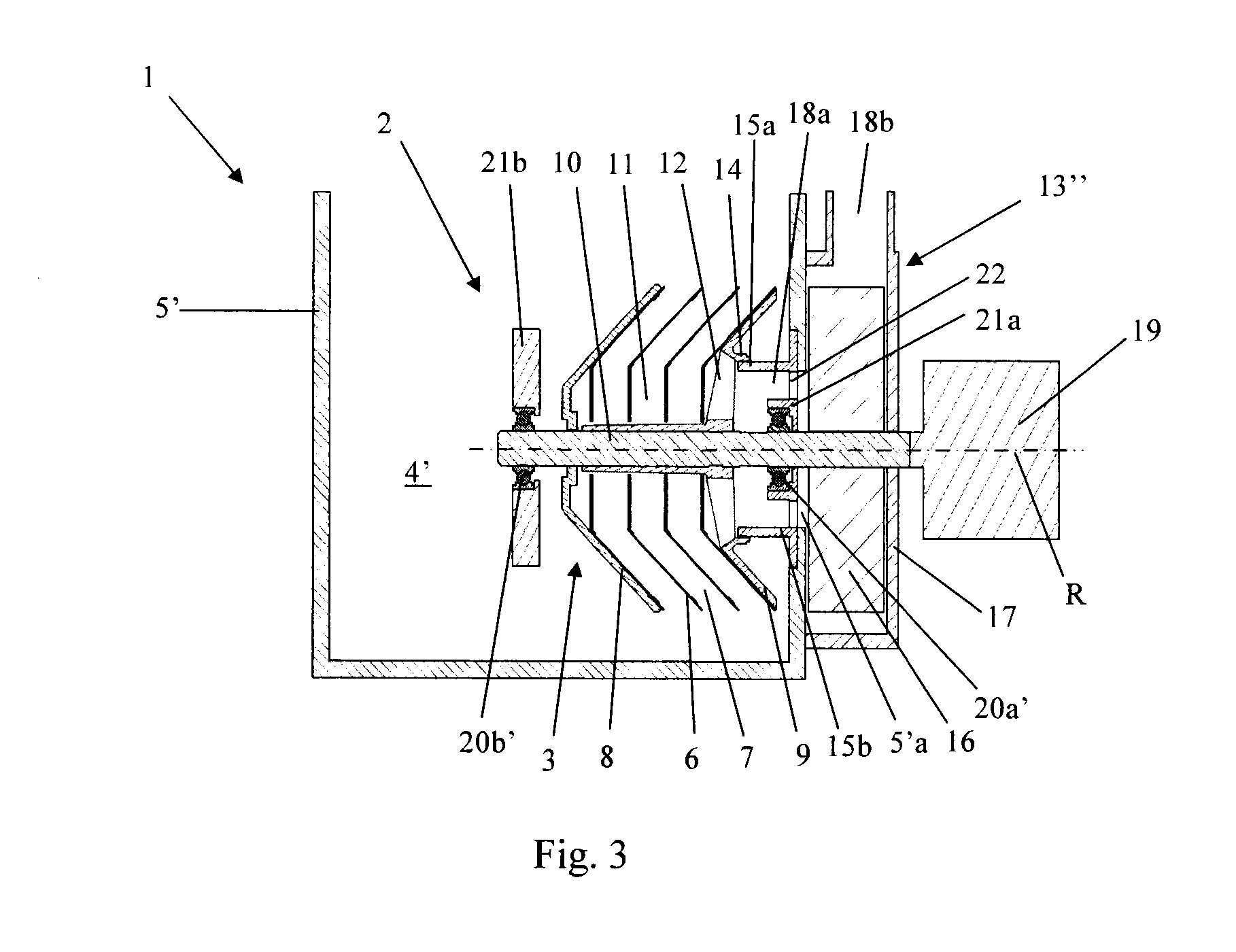Centrifugal separator
- Summary
- Abstract
- Description
- Claims
- Application Information
AI Technical Summary
Benefits of technology
Problems solved by technology
Method used
Image
Examples
first embodiment
[0033]In the first embodiment shown in FIG. 1, the stationary gas outlet 13 is disposed in the space 4 within the valve cover 5. A fan impeller 16 is provided at a first end of the rotor shaft 10 which extends into the gas outlet 13, and a portion of the gas outlet 13 which surrounds the fan impeller 16 is configured as a fan housing 17. The gas outlet 13 further comprises an outlet duct 18b connected to the fan housing 17 and arranged to conduct crankcase gas out from the space 4 through a duct lead-through or aperture 5a in the valve cover 5. The fan impeller 16 in the gas outlet 13 is configured to pump crankcase gas from the outlet chamber 11 and out through the outlet duct 18b of the fan housing 17. In a counter flow separator, the stack of separating discs 6 exerts a pumping action on the gas flow in a direction opposite to the desired direction of flow, causing flow resistance or pressure drop through such a centrifuge rotor 3 during operation. The fan 16 is thus adapted to a...
second embodiment
[0035]In the second embodiment shown in FIG. 2, the stationary gas outlet 13′ takes the form of a tubular element 15b which defines an outlet duct 18a for cleaned crankcase gas. In the valve cover 5 there is an aperture 5a to which the outlet duct 18a connects so that cleaned crankcase gas can be conducted out from the space 4 within the valve cover 5. The tubular element 15b is connected directly to the valve cover 5 in the region around its aperture 5a, extends axially inwards towards the annular flange 14 on the second end wall 9 of the centrifuge rotor 3 and has a free end in the form of a cooperating annular flange 15a. As described above, the flanges 14 and 15a are arranged to cooperate in order to guide the cleaned crankcase gas from the central outlet chamber 11 in the centrifuge rotor 3 to the stationary gas outlet 13′.
[0036]FIG. 2 shows a first end of the rotor shaft 10 extending into the tubular element 15b which surrounds a bearing unit comprising a first bearing 20a′ an...
third embodiment
[0037]In the third embodiment shown in FIG. 3, the centrifuge rotor 3 is disposed for rotation within a crankcase 5′. The space 4′ within the crankcase 5′ is arranged to contain oil in liquid form up to a certain level. However, the rotor 3 is disposed in the portion of the space 4′ which is arranged to contain crankcase gas. Consequently, the centrifugal separator 2 shown is situated at a suitable distance above said oil level so that there is no risk of the centrifuge rotor 3 coming into contact with, or being filled with, the liquid oil.
[0038]FIG. 3 shows a stationary gas outlet 13″ provided with a tubular element 15b which defines an outlet duct 18a for cleaned crankcase gas. In the crankcase 5′ there is an aperture 5′a to which the outlet duct 18a connects so that cleaned crankcase gas can be conducted out from the space 4′ within the crankcase 5′. The tubular element 15b is connected directly to the crankcase 5′ in the region round its aperture 5′a and extends radially inwards...
PUM
| Property | Measurement | Unit |
|---|---|---|
| Pressure drop | aaaaa | aaaaa |
| Speed | aaaaa | aaaaa |
Abstract
Description
Claims
Application Information
 Login to View More
Login to View More - R&D
- Intellectual Property
- Life Sciences
- Materials
- Tech Scout
- Unparalleled Data Quality
- Higher Quality Content
- 60% Fewer Hallucinations
Browse by: Latest US Patents, China's latest patents, Technical Efficacy Thesaurus, Application Domain, Technology Topic, Popular Technical Reports.
© 2025 PatSnap. All rights reserved.Legal|Privacy policy|Modern Slavery Act Transparency Statement|Sitemap|About US| Contact US: help@patsnap.com



